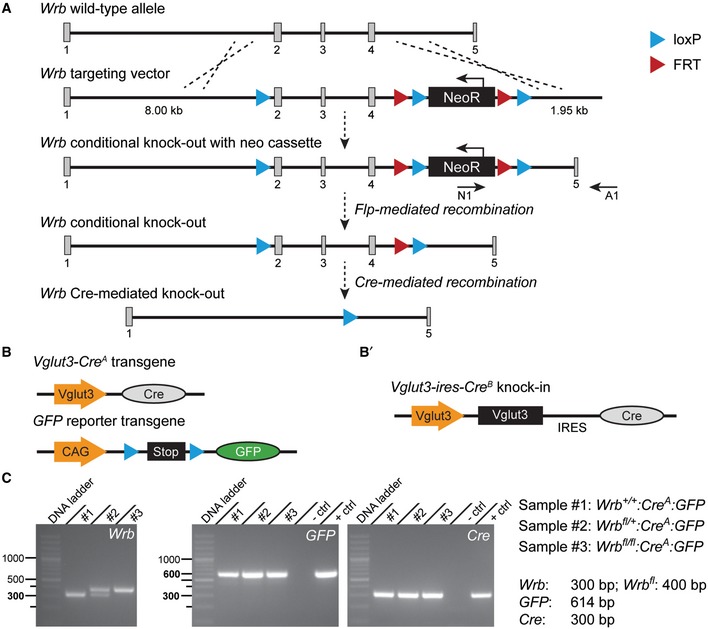-
A
The wild‐type allele with five exons is shown on top, below then the targeting vector, the targeted allele with the neomycin cassette, which served as selection marker of ES cells (the neomycin resistance gene is removed in ES cells through the activity of flipase‐mediated recombination acting on the FRT sites), followed by the targeted conditional knockout allele after Flp recombination and lastly the Wrb allele after homologous Cre recombination and excision of exons 2–4.
-
B
Maps of the Cre‐expressing transgene under the Vglut3 gene promoter and of the GFP reporter transgene containing a stop cassette flanked by loxP sites. Cre‐directed homologous recombination at loxP sites of Wrb conditional knockout and at GFP reporter transgene results in Wrb Cre‐mediated knockout alongside removal of the stop cassette before GFP and thus GFP expression.
-
B′
Map of the knock‐in transgene where the coding sequence of Cre is inserted at the end of the Vglut3 gene locus following an internal ribosomal entry site (IRES) segment.
-
C
PCR genotyping results. Tail DNA from three mouse littermates was used to demonstrate the Cre‐mediated expression of Wrb in the three genotypes. In the conditional knockout mouse (sample #3), the length of the Wrb allele is bigger than in the wild‐type mouse (sample #1), due to the extra two loxP and one FRT sites inserted in the gene. Sample #2 is from a heterozygous animal, which expresses only one Wrb conditional allele. PCR from this sample demonstrates 2 bands, one of the wild‐type allele and the other of the transgene. The expression of GFP and Cre is confirmed in all three genotypes. Brain tissue was used as a positive control.

